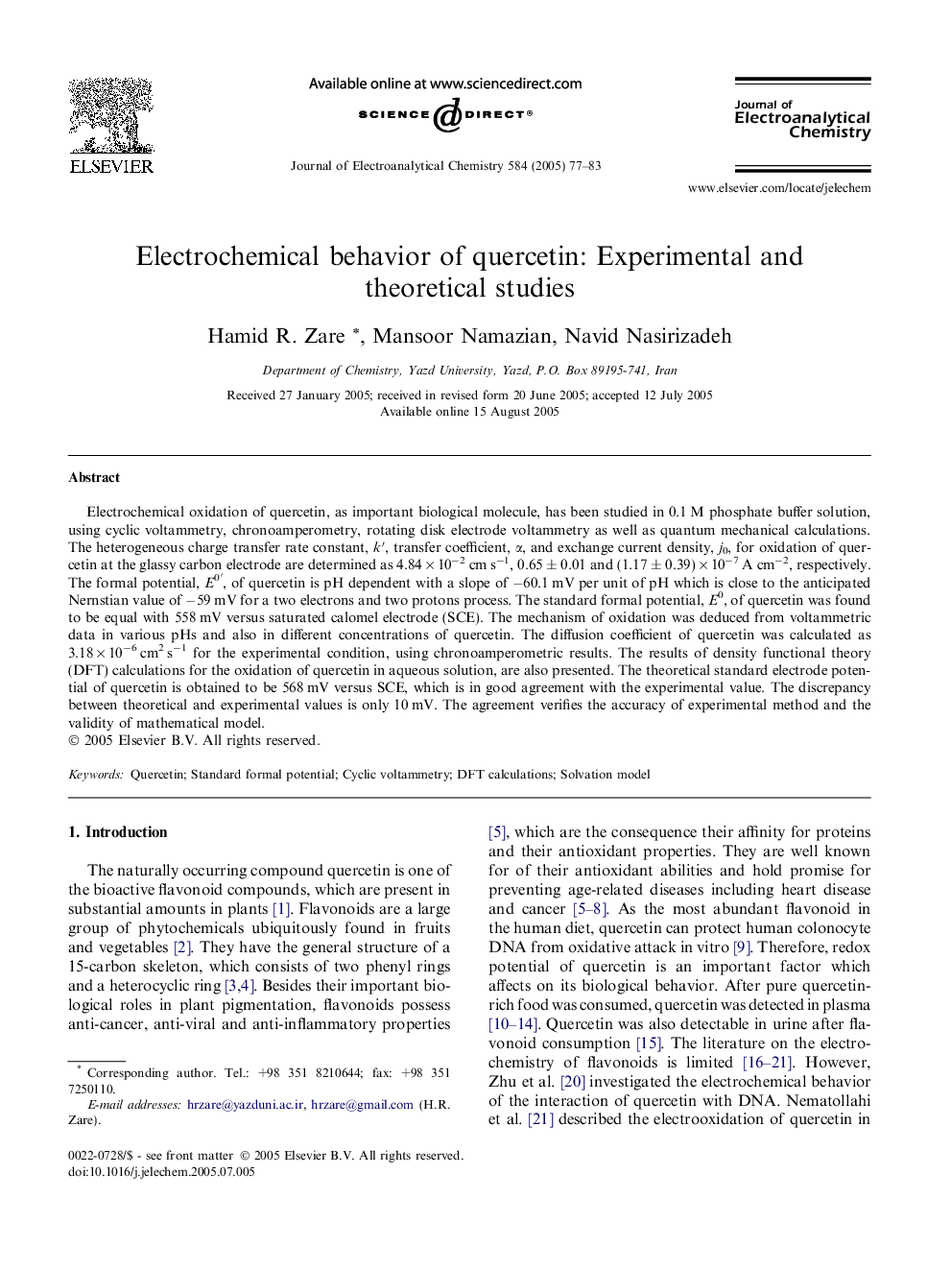| Article ID | Journal | Published Year | Pages | File Type |
|---|---|---|---|---|
| 10275754 | Journal of Electroanalytical Chemistry | 2005 | 7 Pages |
Abstract
Electrochemical oxidation of quercetin, as important biological molecule, has been studied in 0.1 M phosphate buffer solution, using cyclic voltammetry, chronoamperometry, rotating disk electrode voltammetry as well as quantum mechanical calculations. The heterogeneous charge transfer rate constant, kâ², transfer coefficient, α, and exchange current density, j0, for oxidation of quercetin at the glassy carbon electrode are determined as 4.84 Ã 10â2 cm sâ1, 0.65 ± 0.01 and (1.17 ± 0.39) Ã 10â7 A cmâ2, respectively. The formal potential, E0â², of quercetin is pH dependent with a slope of â60.1 mV per unit of pH which is close to the anticipated Nernstian value of â59 mV for a two electrons and two protons process. The standard formal potential, E0, of quercetin was found to be equal with 558 mV versus saturated calomel electrode (SCE). The mechanism of oxidation was deduced from voltammetric data in various pHs and also in different concentrations of quercetin. The diffusion coefficient of quercetin was calculated as 3.18 Ã 10â6 cm2 sâ1 for the experimental condition, using chronoamperometric results. The results of density functional theory (DFT) calculations for the oxidation of quercetin in aqueous solution, are also presented. The theoretical standard electrode potential of quercetin is obtained to be 568 mV versus SCE, which is in good agreement with the experimental value. The discrepancy between theoretical and experimental values is only 10 mV. The agreement verifies the accuracy of experimental method and the validity of mathematical model.
Related Topics
Physical Sciences and Engineering
Chemical Engineering
Chemical Engineering (General)
Authors
Hamid R. Zare, Mansoor Namazian, Navid Nasirizadeh,
